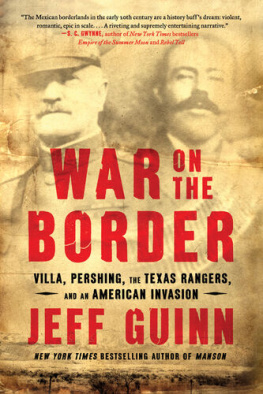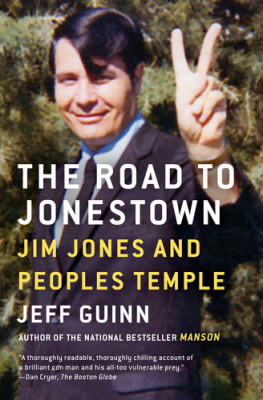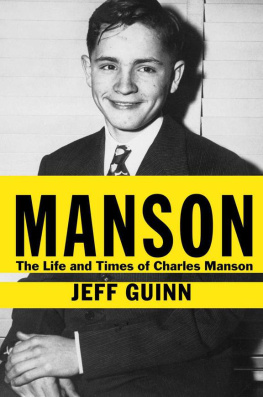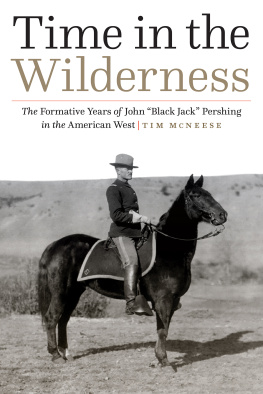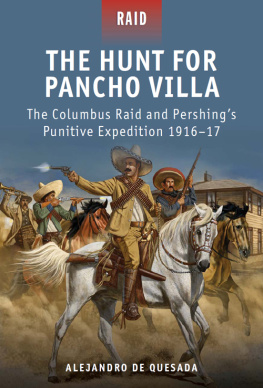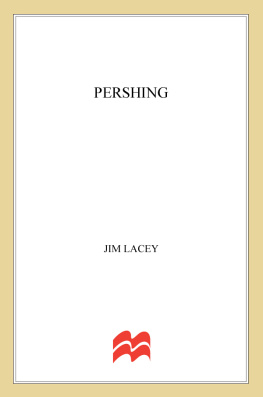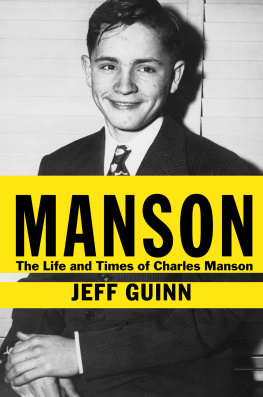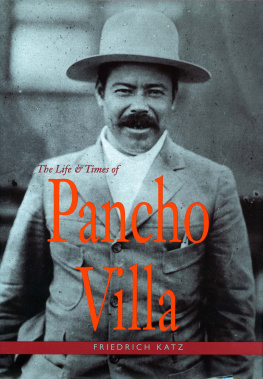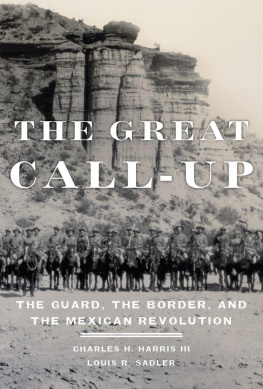Contents
Guide
Villa, Pershing, the Texas Rangers, and an American Invasion
War on the Border
Jeff Guinn
New York Times bestselling author of Manson
ALSO BY JEFF GUINN
The Vagabonds: The Story of Henry Ford and Thomas Edisons Ten-Year Road Trip
The Road to Jonestown: Jim Jones and Peoples Temple
Manson: The Life and Times of Charles Manson
The Last Gunfight: The Real Story of the Shootout at the O.K. CorralAnd How It Changed the American West
Go Down Together: The True, Untold Story of Bonnie and Clyde

Simon & Schuster
1230 Avenue of the Americas
New York, NY 10020
www.SimonandSchuster.com
Copyright 2021 by 24Words LLC
All rights reserved, including the right to reproduce this book or portions thereof in any form whatsoever. For information, address Simon & Schuster Subsidiary Rights Department, 1230 Avenue of the Americas, New York, NY 10020.
First Simon & Schuster hardcover edition May 2021
SIMON & SCHUSTER and colophon are registered trademarks of Simon & Schuster, Inc.
For information about special discounts for bulk purchases, please contact Simon & Schuster Special Sales at 1-866-506-1949 or .
The Simon & Schuster Speakers Bureau can bring authors to your live event. For more information or to book an event, contact the Simon & Schuster Speakers Bureau at 1-866-248-3049 or visit our website at www.simonspeakers.com.
Interior design by Paul Dippolito
Jacket design by Math Monahan
Jacket art: General J . Pershing by American Photo Archive/Alamy Stock Photo; Pancho Villa by Pictorial Press Ltd/Alamy Stock Photo; Mountains by Swinsider/Getty Images; Paper texture by Brooke Anderson Photography/Getty Images
Library of Congress Cataloging-in-Publication Data
Names: Guinn, Jeff, author.
Title: War on the border : Villa, Pershing, the Texas Rangers, and an American invasion / by Jeff Guinn.
Description: First Simon & Schuster hardcover edition. | New York : Simon & Schuster, 2021. | Includes bibliographical references and index. Identifiers: LCCN 2020049279 | ISBN 9781982128869 (hardcover) | ISBN 9781982128876 (trade paperback) | ISBN 9781982128883 (ebook)
Subjects: LCSH: Pershing, John J. (John Joseph), 18601948. | Villa, Pancho, 18781923. | United States. ArmyHistoryPunitive Expedition into Mexico, 1916. | Texas RangersHistory20th century. | Mexican-American Border RegionHistory20th century. | MexicoHistoryRevolution, 19101920.
Classification: LCC F1234 .G928 | DDC 972.08/16dc23
LC record available at https://lccn.loc.gov/2020049279
ISBN 978-1-9821-2886-9
ISBN 978-1-9821-2888-3 (ebook)
For Charles and Mary Rogers, friends of the heart
Prologue
Columbus, New Mexico, March 89, 1916
O n Wednesday afternoon, March 8, in 1916, thirty-seven-year-old Pancho Villa crouched on a low hill about a mile south of the U.S.-Mexican border. A morning dust storm had left him and his exhausted followers coated with sand, but during the last few hours the air cleared and so Villa had an excellent view as he trained his binoculars four miles to the northeast. For several long minutes, Mexicos most notorious rebel leader studied the American border town of Columbus, a desolate New Mexico hamlet described by one U.S. soldier stationed there as a cluster of adobe houses, a hotel, a few stores, and streets knee-deep in sand, [which] combined with the cactus, mesquite and rattlesnakes of the surrounding desert were enough to present a picture horrible to the eyes. Columbus was home to perhaps five hundred hardscrabble civiliansapproximately a fifty-fifty mix of Anglos and Hispanicsand a military camp whose officers and enlisted men faced daily the impossible task of guarding a sixty-five-mile stretch on the American side of the sievelike border against rustlers and other unwelcome interlopers. But to Villa, desperate after several overwhelming defeats against Mexican government forces and massive desertions reduced his once mighty army from about forty thousand to a few hundred, the unsightly little place represented opportunity.
Five months earlier, the U.S. had formally recognized the regime of patrician Venustiano Carranza, Villas archenemy and the man whose forces decimated Villas in battles throughout 1915, as the official government of Mexico. President Woodrow Wilson and his advisors made the decision despite their collective dislike of the prickly Carranza, a haughty Mexican nationalist who constantly criticized every American diplomatic and military effort to suppress danger to U.S. citizens from Mexicos apparently endless civil revolution. That fighting threatened not only American citizens along the northern side of the border, but also the property of many politically influential U.S. owners of sprawling ranches and flourishing factories and mines on Mexican soil. In contrast, Villa repeatedly proved himself to be a firm American friend, acting in 1914 as the sole voice among Mexican leadership in support of Americas months-long occupation of Mexicos vital port city of Veracruz, protecting American-owned property in Mexico, and even withdrawing his troops from a border town battle against the Carrancistas when gawking American spectators from the U.S. side ventured too close and found themselves in danger from stray shots. But in October 1915, during Villas own time of greatest need, Wilson recognized Carranza, going so far as to immediately ferry Carrancista reinforcements on U.S. trains to the border battle site of Agua Prieta, where Villa was decisively defeated. He and his few surviving followers fled into the mountains of northern Mexico, while Carranza crowed that his longtime antagonist was gone for good. In his rocky exile, Villa realized that, in his current, desperate circumstances, he could no longer hope to defeat Carranza by force of arms.
With all apparently lost, Villa recognized an opportunity to regain popular support by appealing to his countrymens deep-seated animosity toward the United States of America. Though a 1900 census indicated that only 16 percent of the countrys population could read and write, virtually every citizen resented Americas remorseless acquisition of Mexican land. Through war, purchase, and outright coercion, over half of Mexicos original territory now belonged to the U.S. Even the potential for American soldiers crossing their border again enraged most Mexicans, especially the multitude of powerless poor who relied on a sense of national honor as their basis for self-esteem.
Villa began declaring that the yanquis were returning, this time with Carranzas blessing because, in return for U.S. diplomatic recognition, military assistance at Agua Prieta, and bribes, hed already sold them Mexicos remaining northern states. The lie resonated with many Mexicans; all that was needed for them to fully believe, and to actively turn on Carranza, was for American soldiers to come again; then Villa would have Carranza neatly trapped. The American-anointed leader would have to demand that the invaders leave at once, even use Mexican troops in an attempt to force them out, or else grudgingly accept their presence. If he chose the former, his alliance with the U.S. would likely crumble, and with it any chance of receiving American bank loans and additional business investments that were badly needed to bolster the sagging Mexican economy. Yet if Carranza didnt immediately expel the American soldiers, hed be perceived as a gringo lackey. Either way, Villa would make clear that while Carranza must in some way be complicit with this latest invasionAmerica picked



